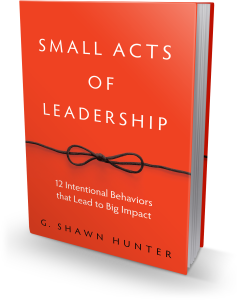The Subtle Art of Being Direct Instead of Being Blunt
“If you want to get your point across, be direct; if you want to destroy any chance of doing so, be blunt.”
– Mark Goulston, Ph.D.
Have you read any David Sedaris? Or better, have you seen one of his shows? The things he says are appalling. My wife and I went to see Sedaris recently. He stands at a lectern and reads his own material in a fairly deadpan manner. In the first few minutes I thought it might be boring. Oh, was I wrong.
He says things out loud in front of a thousand strangers that most people would blush just thinking about. He says things that leave you gobsmacked, wondering, “Did he just say that?” It’s a kind of shock theater he is especially good at.
We go to comedy hour or the theatre to hear something surprising or alarming or shocking. But we don’t go to work to hear our colleagues be crass or rude or smart-ass.
There’s a subtle difference between being blunt and being direct. Think of these two things in terms of tools. A sledgehammer is a blunt force tool. Needle-nose pliers or wood planes require subtle care, even artistry, to use well. It’s the same idea with words. Remember, the words we use not only shape other people’s impression and reaction to us, our words also shape the way we think and act in the world. Choose well, and use words with care.
I’ve been re-reading Goulston’s book Get Out of Your Own Way, and he has some great advice for trying to discern between being blunt and being direct.
- Slow down. The next time you think about barking out a response or shooting from the hip, take a deep breath and sit up straight. Those two little things will slow you down, and help you think.
- Respect boundaries. You may think someone else’s boundaries are stupid, but respect them. If you colleague says they want a quiet hour to get something done, give them that space. You may only have a quick, easy question, but that small disruption could derail their thought and energy.
- You do care. When you get ready to spout off about something and you think to yourself, “I don’t give a damn what they think.” Think again. If you really didn’t care you would walk away. Ask yourself instead, “Why am I trying to get a reaction out of them?” You might have a good reason, and you might craft that comment better.
- WWJD? What would ______ do? It doesn’t have to be Jesus, of course. Think of someone you love and admire, and ask yourself, “What would they do in this situation?” Do that instead.
Remember, you’re an artist, not a rock-smasher. When interacting with other people, you want influence, and influence starts with empathy and understanding.
Learn how to be confident, consistent, and calm in the middle of chaos by elevating your leadership presence. Check out the Art of Leadership Presence from Mindscaling.
- ____________________________________________________

Last summer, my son and I bicycled across America with two other dads and their teenagers. We published a new book about it called Chasing Dawn. I co-authored the book with my cycling companion, the artist, photographer, and wonderful human jon holloway. Buy a copy. I’ll sign it and send it to your doorstep.



